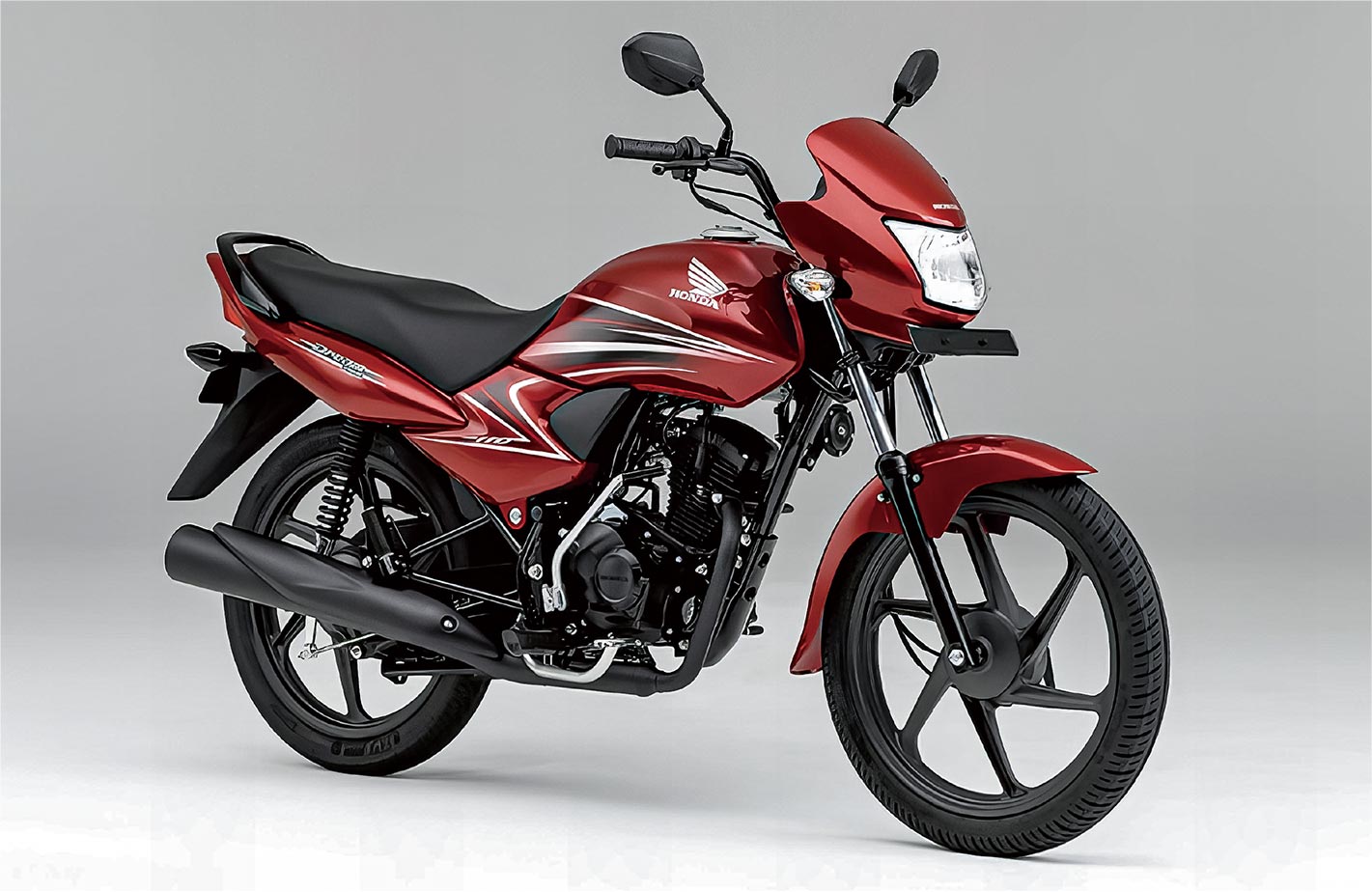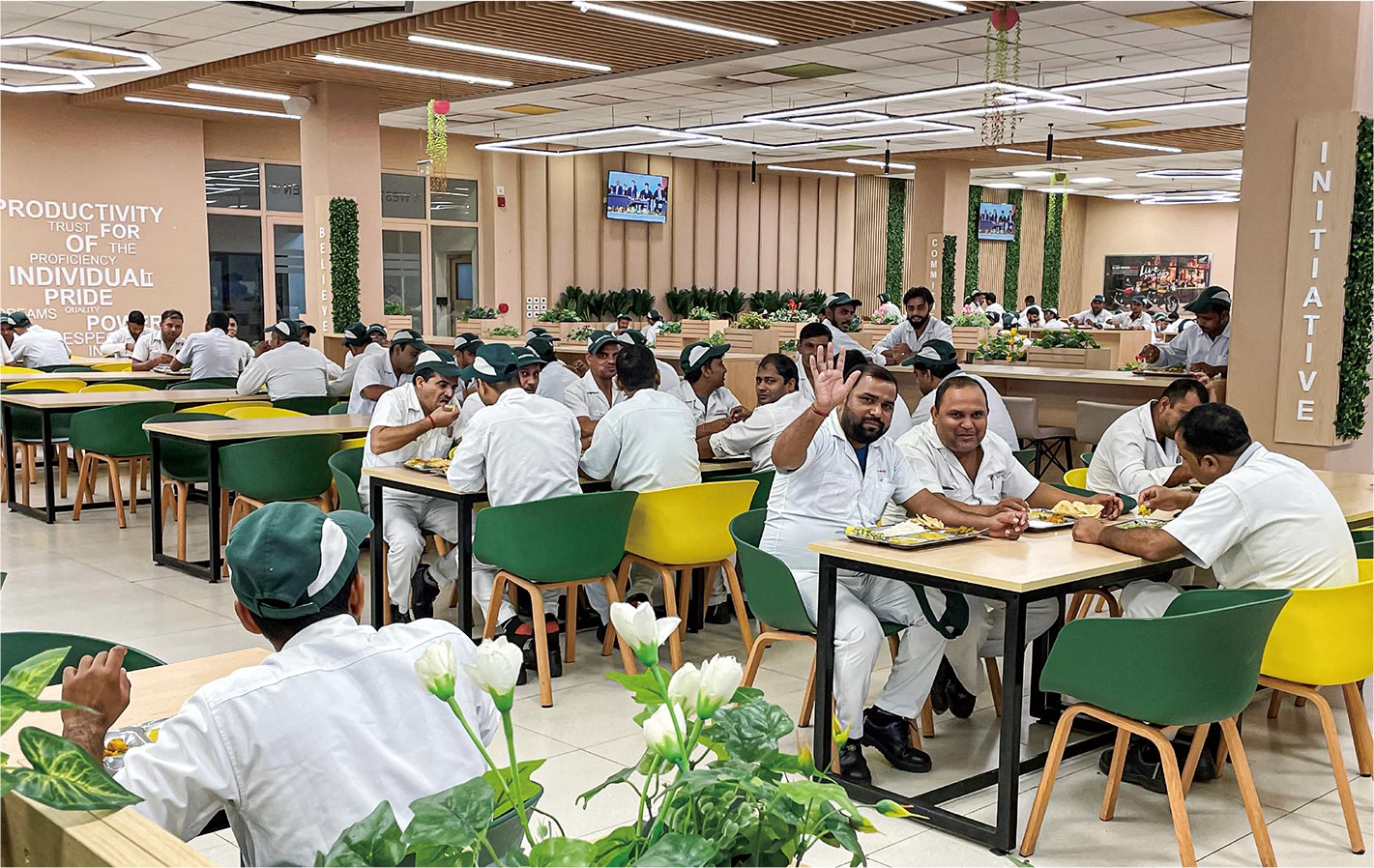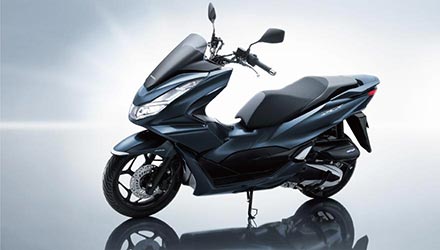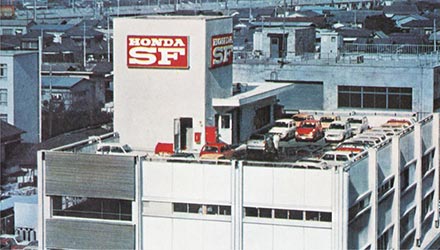Making Company-wide Efforts to Realize Dreams:
Honda Launches Dream Yuga to Increase Market Share
Honda motorcycle business in India had entered a new era. In 2012, Keita Muramatsu, then president of HMSI, proposed a change in the brand slogan, based on the idea that a corporate identity should be established to fully establish trust with dealers and associates for the Honda brand and HMSI, and to bring the entire company together.
Until then, HMSI had its own slogan, “I enjoy,” but Muramatsu suggested that it be changed based on the Honda Global Brand Slogan, “The Power of Dreams,” and that the new slogan be devised by the associates rather than management. The slogan expressed the strong belief that if associates and dealers believed in their dreams and worked hard, the dreams would come true.
To truly understand and share the Honda spirit that each associate’s dream and passion is the source of its challenging spirit, a new slogan “SachKardenge Sapne” was born through extensive discussions. The Hindi slogan means “Let’s make our dreams come true.”
HMSI associates produced a video of Honda history to deepen their understanding of the company, and strived to instill the new slogan through posters and promotional materials. The company also translated the new slogan into various regional languages in India and distributed them, steadily communicating the aspirations of Honda to customers.
The Honda “dream” was also incorporated into the new company’s first product: In 2012, HMSI introduced the Dream Yuga, HMSI’s first mass segment motorcycle model. Muramatsu's proposal of including “Dream” in its name was supported by the strong will of HMSI associates and dealers to unite as a team to make the dream a reality. Moreover, “Yuga” means “next generation.”
The Dream Yuga, with its dynamic form, air-cooled 110 cc engine, and class-leading fuel economy, was truly a model that portrayed the next generation. The price was set in the lower price range to match the needs of the Indian domestic market. HMSI had begun its challenge to expand market share in the 100 cc motorcycle class, the market’s volume segment, to reach the No.1 share in the Indian motorcycle market.

Dream Yuga, introduced to capture the No.1 share in the Indian motorcycle market’s volume segment, the 100 cc class.
Expanding the Production Operation and Sales Network
to Conduct Business Rooted in the Community
In 2010, India’s industrywide annual motorcycle sales exceeded 10 million units, and by 2012, had grown to around 13 million units, making it the second largest market in the world after China, but it was expected to expand even further. Motorcycles accounted for more than 70% of the market, with the most popular being the 100 cc class, and HMSI’s sales volume in India in FY2012 was approximately 2 million units, ranking third in terms of market share.
HMSI first expanded its production system, doubling capacity of its second plant, which began operations in 2011, to 1.2 million units per year in 2012. In 2013, a third plant was built in Narsapura, Karnataka, in the southern part of the country, and began production. The first and second plants were located in the north, and in consideration of the unique circumstances in India, including concerns about road maintenance and logistics systems, as well as different taxes in different states, HMSI decided to establish a production base in the south to increase efficiency while expanding production capacity. With the start of operations at the third plant, total annual production capacity increased to 4 million units.
In 2016, a fourth plant dedicated to scooters was established in the Ahmedabad district of Gujarat. Through the expansion of production capacity, including the addition of an assembly line, the total annual production of the four plants reached 7 million units in 2018. Total global Honda motorcycle sales totaled 20 million units, with more than one-third sold in India alone.
The most important issue to achieving the 2020 sales target was to expand the sales network. Up to then, HMSI had created a sales network centered on major cities, and as of the end of May 2012, the network had expanded to around 1,500 outlets, including service centers. Furthermore, as a strategy for the future, expanding the sales network to cover the whole of India, especially in rural areas, was essential in order to increase motorcycle sales. To achieve this, a strategy that differentiated HMSI from local manufacturers was needed.
First, HMSI divided India into five regions (East, West, South, North, and Central) and set up regional offices to serve as sales offices, developed dealers and gathered information on the region. The regional offices were staffed with experienced Honda expats from Japan in addition to Indian associates.
“Experts stationed in each region took care and patience in teaching associates product knowledge and customer service. The key was how well the dealership associates could communicate how Honda motorcycles were superior. The Japanese expats and local associates worked together to expand the sales network throughout the country," said Igarashi.
HMSI associates visited local dealers to promote Honda and its products, and also traveled around the region with service cars carrying tools to perform motorcycle maintenance and repairs.
“Market cultivation in emerging countries must meet a wide variety of needs and expectations. To this end, we asked our experienced expats from Japan to fully utilize their know-how. Building a sales network from scratch was difficult, but I think it was a valuable experience for our associates in India that will support future expansion of business here," said Kobayashi.
Based on Honda criteria, new dealers were selected from applicants and incorporated into the sales network. In addition to the three basic operations – sales, service and parts business – activities to promote safe riding was added to the requirements for all Honda dealers to create an environment where customers could purchase Honda products with peace of mind.
Kobayashi said: “We knew the future of our operation depended on how well we could establish a solid operational structure. All associates in all areas, including development, production and sales, accelerated their efforts with the enthusiasm as if it was the second founding of our operation in India.”

Fourth production plant was established in 2016.
In 2018, total annual production capacity of four plants reached 7 million units.
Creating New Core of Business in the Midst of Tough Times:
Development of Environmentally-responsible Engines
and Introduction of Large Motorcycle Models
 Activa 125 equipped with eSP engine launched in response to BS6 standards
Activa 125 equipped with eSP engine launched in response to BS6 standards
The Indian motorcycle market continued to grow steadily, surpassing China in sales volume in 2013 and production volume in 2015 to become the largest motorcycle market and producer in the world. However, after peaking in 2018 with record sales of 21.64 million motorcycles, the Indian market entered a period of stagnation from the second half of 2018, due to a combination of stalling economic growth and the impact of increased costs due to tighter motorcycle-related environmental and safety regulations.
Regarding safety, changes in the mandatory insurance system and the mandatory installation of ABS (Anti-lock Braking System) and CBS (Combined Braking System) caused price increases. On the environmental front, India's BS6*1 emission regulations to be enacted in 2020 prompted Honda to shift from carbureted engines to fuel-injected engines equipped with an electronically controlled fuel injection (PGM-FI) system. Honda leveraged its technological strengths to comply with the BS6. In 2019, Honda launched the Activa 125 scooter equipped with an eSP*2 engine, which realized both excellent riding performance and environmental performance including high fuel economy.
Furthermore, Honda developed the world’s first tumble flow technology which produces tumble air flow*3 in the combustion chamber without adding additional components. This enabled Honda to successfully improve the fuel economy of the all-new Activa125 by 10%.
There was also a new trend in the Indian motorcycle market. Royal Enfield, a local Indian manufacturer (originated in the UK) that had dominated market share with medium- and large-sized models, expanded its lineup and strengthened its brand at dealerships in conjunction with making improvements to its models to meet the new environmental standards, gaining popularity both inside and outside of India.
Honda was not to be outdone. Until then, the HMSI product lineup did not include any models with an engine size larger than 300 cc, but under the new development concept of “From daily riding to long distance travel - The Honda Basic Roadster,” HMSI set out to develop a road sport model with the Japanese market also in mind. The result was the H'ness CB350, announced in 2020. Within four months of its launch, sales reached 10,000 units. In conjunction with the introduction of this model, HMSI strengthened its sales network by launching Honda Big Wing, a new dealership network to handle models with engine size greater than 300 cc, and the CB350 became the No. 1 model in the 350 cc class in India.
In 2021, Honda introduced the H'ness CB350 in Japan, under the product name GB350, and it was well received. This expanded the production of global strategic models in India.
- Bharat Stage Emission Standards 6
- eSP (enhanced Smart Power): Generic term for scooter engines with enhanced environmental performance and dynamic performance by adopting advanced technologies such as fuel-efficient technology and ACG starters
- Vertical vortex air flow in a tumble-flow cylinder

H’ness CB350
Taking Advantage of the COVID-19 Pandemic and Revamping
the Manesar Plant through Structural Reforms
In 2019, HMSI had taken the top spot in the Indian scooter market with a share of over 50%. In the 110 cc to 125 cc class, HMSI has been the second largest with market share of over 40%, second only to Hero.
With its four plants operating at full capacity, HMSI was producing 6 million units per year, and aiming for 7 million units which would give HMSI the largest market share for the scooter and motorcycle market combined. However, an unexpected challenge struck in the form of the COVID-19 pandemic.
In March 2020, following the spread of the COVID-19, the Indian government imposed a lockdown throughout the country, forcing HMSI to stop production and sales as well. The lockdown lasted for about two months, and HMSI had no sales in April and May. This was an unprecedented situation since HMSI was founded.
Atsushi Ogata, who became president of HMSI in April 2020 at the very beginning of this crisis, made the decision to carry out “Project Rupantar” (“revitalization” in Hindi), a structural reform of HMSI. The key was the revitalization of its 1st plant in Manesar, which was facing various problems at the time.
The first step was to adjust production capacity. The Manesar Plant had an annual production capacity of 1.6 million units on three lines, but this was reduced to 400,000 units on one line. The space for the two lines that stopped production was converted into a space for small-lot, knockdown production of high value-added medium and large models, and for functions necessary to export products, such as packaging and quality assurance.
Moreover, for the widespread adoption of remote work, HMSI set an upper limit on the percentage of back-office associates who could come in the office in Gurgaon. Consequently, HMSI decided to sell its head office building and relocated head office functions to the Manesar Plant. In addition to resolving issues at the spot of its manufacturing operation, HMSI also improved associate benefits and the working environment. For example, HMSI associates shared their ideas and set up a company cafeteria named Dreamers' Café, with terrace seats overlooking a fountain and spacious lawn. The Project Rupantar has been also implemented at three other HMSI factories.

Cafeteria at the Manesar Plant has been a place for associates to relax during lunchtime.
Continuing to Work with the People of India,
from India's Perspective
Motorcycle demand in India is currently undergoing an adjustment phase due to changes in the market environment, including changes in economic conditions, laws and regulations, gasoline price hikes, as well as impact of the COVID-19 pandemic. However, the demand is expected to continue to grow moderately due to the forecasted economic recovery and an increase in the working-age population In order for Honda to survive the fierce competition in the Indian motorcycle market, it is vital to understand the changing times and always look one step ahead.
Despite being the largest motorcycle market, India's motorcycle ownership rate is actually not very high: as of 2019, the country had only around 160 motorcycles per 1,000 people. The world's highest sales volume is due to its huge population of 1.3 billion.
Motorcycles have been an important means of transportation for the people of India and contribute to the country’s overall social infrastructure as minimal form of transportation, presenting high potential for future market growth.
Looking at the current situation, the market is being boosted by growing demand for motorcycles in regional cities and rural areas, as well as the increasing number of female riders due to their social advancement. Since motorcycles have already been popularized in urban areas, the key for the future business expansion will be to attract users in medium-sized cities and rural areas.
In addition, while demand for motorcycles is going strong, demand for scooters is also growing. This is due to the fact that road infrastructures have been improved in regional cities, making it easier to ride scooters with small diameter wheels. Honda is expecting that its scooter business in India will continue to grow, in light of its history of earning the largest market share by offering products that fulfill the needs of the customers in the Indian market.
Almost 40 years have passed since Honda first entered the Indian market. Now, as a leading motorcycles manufacturer in the market, that bears high expectations and responsibilities, it is increasingly important for Honda to develop and sell products that satisfy the needs of customers, as well as to further improve the quality of its services.
Honda must also address environmental concerns and the need for electrification. In addition, as part of its efforts to build a healthy mobility society in India, Honda has been focusing on making a contribution to the community through traffic safety education and training. This includes operating traffic training parks and safe riding education centers in various parts of India.
To provide products and services that contribute to the people of India, by conducting business in India, for the people of India, from the perspective of the people of India – this is the strong desire that has remained consistent with Honda throughout its nearly 40 years of business activities in India.




